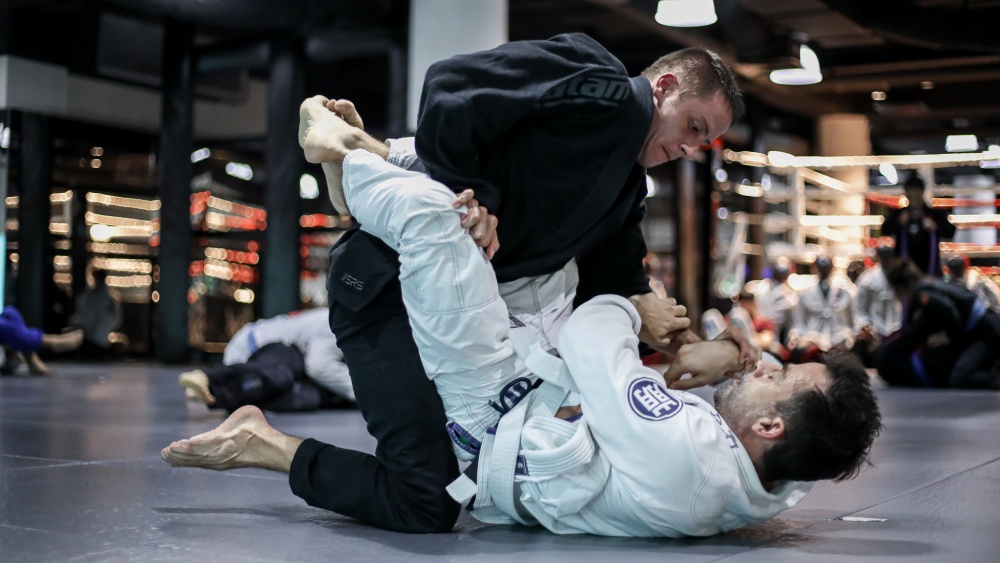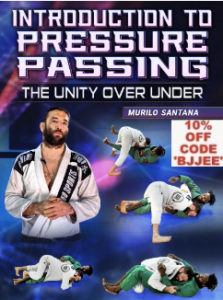Guest post by Evolve MMA, Asia’s premier championship brand for martial arts. It has the most number of World Champions on the planet. Named as the #1 ranked martial arts organization in Asia by CNN, Yahoo! Sports, FOX Sports, Evolve MMA is the top rated BJJ gym in Singapore.
If you’ve been training in BJJ for quite some time, you’ve most likely rolled with different training partners. Every grappler is unique as far as grappling style is concerned, some are nice, and some like to be a little intense. This can be easily observed, especially when you’re new to the gym.
As a practitioner, it is important to understand when to go all out and slow down in training. If you are a higher belt, it is your responsibility to make the lower belts work. On the other hand, if you are a beginner, keep in mind to use your energy efficiently and not go a hundred percent every round. You must manage your intensity when rolling for everyone’s safety, keeping your training partners in mind. This article will discuss when to flow and smash in BJJ.
Flow rolling is how grapplers roll with less intensity and at a more cooperative pace. It is a give-and-take training pace that emphasizes the movements and transition of positions. Both grapplers exchange positions and apply submissions, if applicable, without fully committing to it. As a result, the rolling partner will defend and escape, move on to another position, and so on. But when should you flow roll?
1) Sharpening Learned Techniques
“Slow is smooth, and smooth is fast.” Grapplers sharpen their techniques by drilling. To have good and clean technique, start slow and gradually increase your pace over time. Rushing the technique is not ideal in the long run because you are not putting enough time into understanding every step of the move. Drill with the intent to learn and remove the slack as you get better.
Drilling with a fully cooperative training partner is beneficial in the early stages of learning, but adding some level of resistance is what makes flow rolling worthwhile. Tell your training partner to apply resistance to the rolls, no more than you can handle, and increase it gradually. This is to sharpen the technique and ensure that you can still perform well under the pressure of a somewhat resisting opponent.
2) Learning A New Technique
In relation to the one mentioned above, going slow with the movements is advised when learning a new technique. This allows you to become smooth with the execution so you can effectively apply it in actual sparring.
Likewise, it is also essential that you practice applying the technique under stress. Stressful situations make inexperienced grapplers want to rush things. Slowing down builds you up so you can stay calm and reserved under pressure.
3) Competition Week
A week before the competition, rolling with intensity is no longer advisable as you may get hurt. Flow rolling leading to competition day is a great way to polish your technique. Flow roll with your A game and work on your go-to positions, movements, and escapes. You don’t want to injure yourself by going hard in the gym days before the competition and being unable to compete.
4) Working On Transitions And Movements
Keeping the roll playful is one of the best ways to learn. Flow roll when you want to work on your movements and transitions from one dominant position to another. This helps your awareness when maintaining a dominant position, so you won’t be second-guessing and end up getting reversed or swept.
5) Rolling With Lower Belts
Don’t go full intensity when rolling with a smaller, weaker, or less skilled partner. Beginners are usually not skilled enough to flow roll. Use this opportunity to work on the flow of your techniques. Make the roll beneficial on both sides, and your less experienced training partners will surely appreciate it.
When To Smash In BJJ
The term smash in BJJ means that a stronger and more experienced grappler dominates (or tries to dominate) an opponent or partner decisively with superior technique and physicality. Smashing is not inherently negative. In fact, it is an essential part of developing your journey to becoming a better grappler.
1) Preparing For A Competition
Months or weeks before the competition, it is critical that you shift to a more serious mindset and increase the intensity of your training to mimic the competition environment. Assuming that you are in a competition class as a competitor or a training partner, it is acceptable to smash your training partners. This is to prepare them physically and mentally for the intensity of the competition matches.
2) Dealing With A (Spazzy) Beginner
Typically, beginners have a fight-or-flight response when rolling. These are natural reactions to perceived danger, and the response may vary from person to person. When dealing with a spazzy (less experienced) beginner, it is your job as a more experienced grappler to calm them down. Do not submit them over and over, as this will cause them to spazz even more. Achieve a dominant position and limit their ability to resist.
3) Being The Mat Enforcer
One of the best things about BJJ today is that it is easily accessible. A mat enforcer is the one who deals with people who tend to hurt beginners or training partners – basically, the guy or gal who looks out for everyone in the gym.
If you are the mat enforcer in your gym, it is your job to look out for the less skilled teammates or lower belts by de-escalating the situation against the overly aggressive training partner. This is to remind them to lower the intensity when rolling with the beginners to prevent injuries. If talking does not work, smash!
4) Rolling With Lower Belts Or Intermediate Grapplers
This is not to be confused with the one mentioned earlier. As a higher belt or experienced grappler, it is your responsibility to make the lower belts work. Make the intensity just enough to ensure that the lower belts work on their techniques under pressure.
After submitting or holding them for a period, forcing them to tap because of pressure, teach them the escape or counter to the move. This promotes a healthy environment where all members learn and improve over time.
Conclusion
“Sometimes you’re the hammer, and sometimes you’re the nail!”
You will experience many months of getting smashed at the start of your BJJ journey. This is the nail phase and is extremely important to your development. If you are in this phase, we encourage you to keep at it – focus on defense, proper body positioning and stay calm every time you roll. Things will get better, we promise.
As you progress with your technique by overcoming challenges, frustrations, and sometimes injuries, you become the hammer to your less experienced training partners. Experience is everything in BJJ – don’t hesitate to share your knowledge with the newer guys and promote a culture of growth on the training mats.
No matter where you are in your Jiu-Jitsu journey, do not get discouraged, and always aim for the best version of yourself.
Master The Most Effective & Efficient Pressure Passing System In The World With Murilo Santana’s Total Breakdown Of How To Smash & Dominate The Guard With Crushing Technique – The First 50 to order will receive a FREE WEEK at Unity and one person will be chosen for a private lesson – 50% of the proceeds will be donated to the Leandro Lo foundation.
- Murilo shows you how to troubleshoot this system with insights he has gained over decades of experience.
- Hear Murilo explain concepts like pressure, connection, structure, and more that you can use to better understanding grappling exchanges.
The post Intensity In BJJ: When To Flow And When To Smash appeared first on Bjj Eastern Europe.


